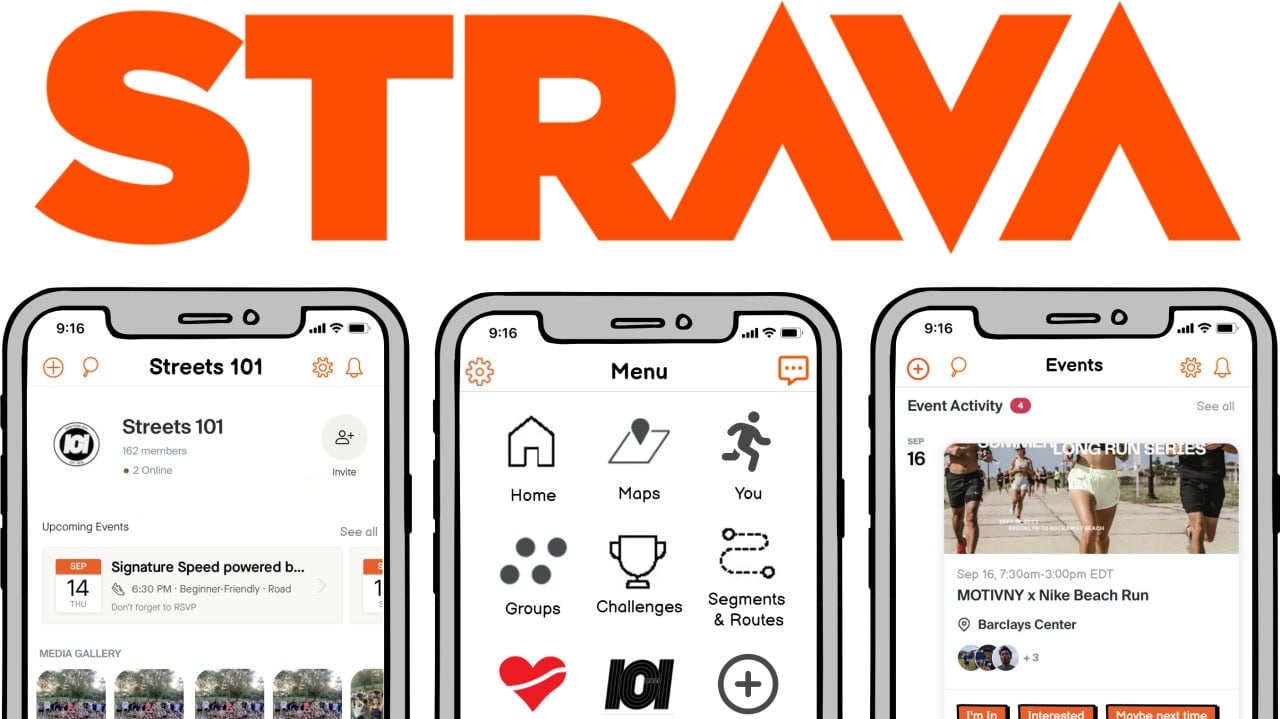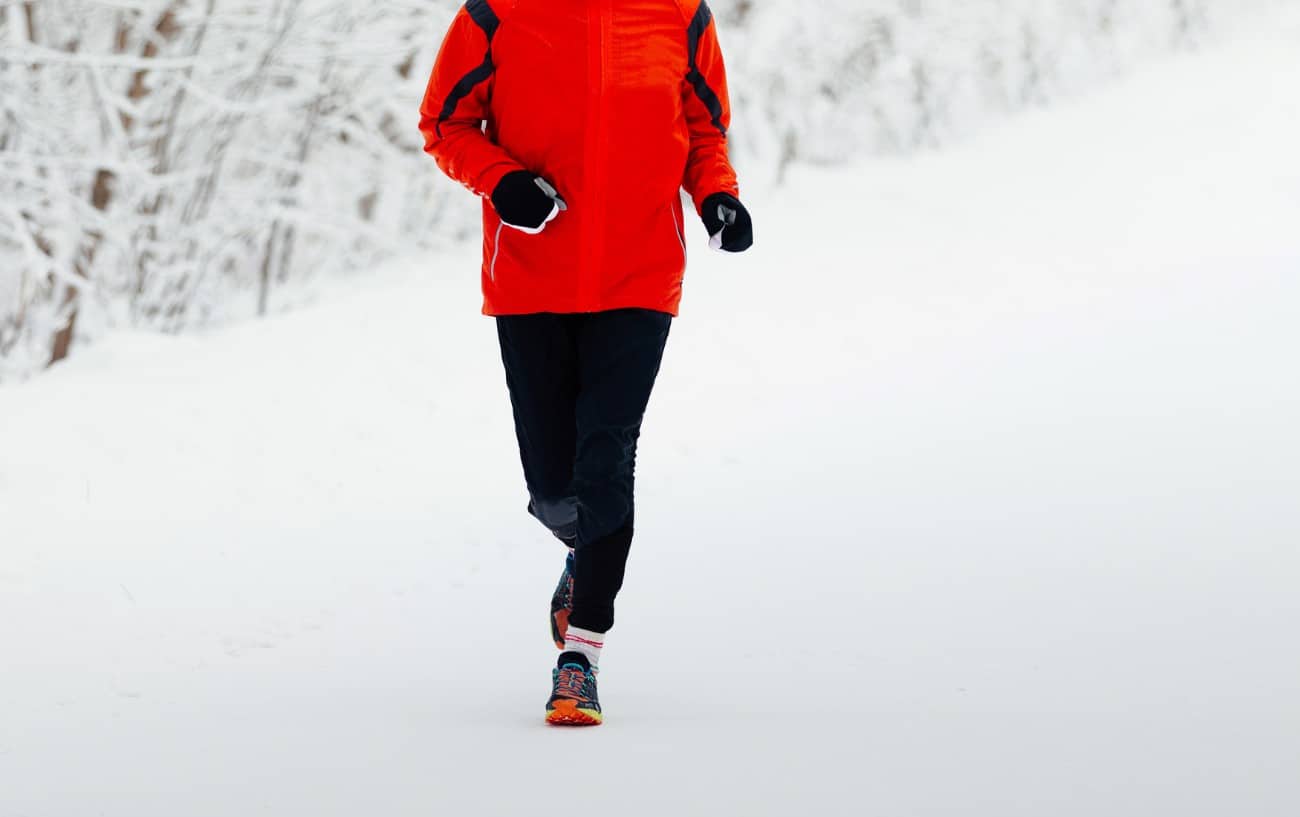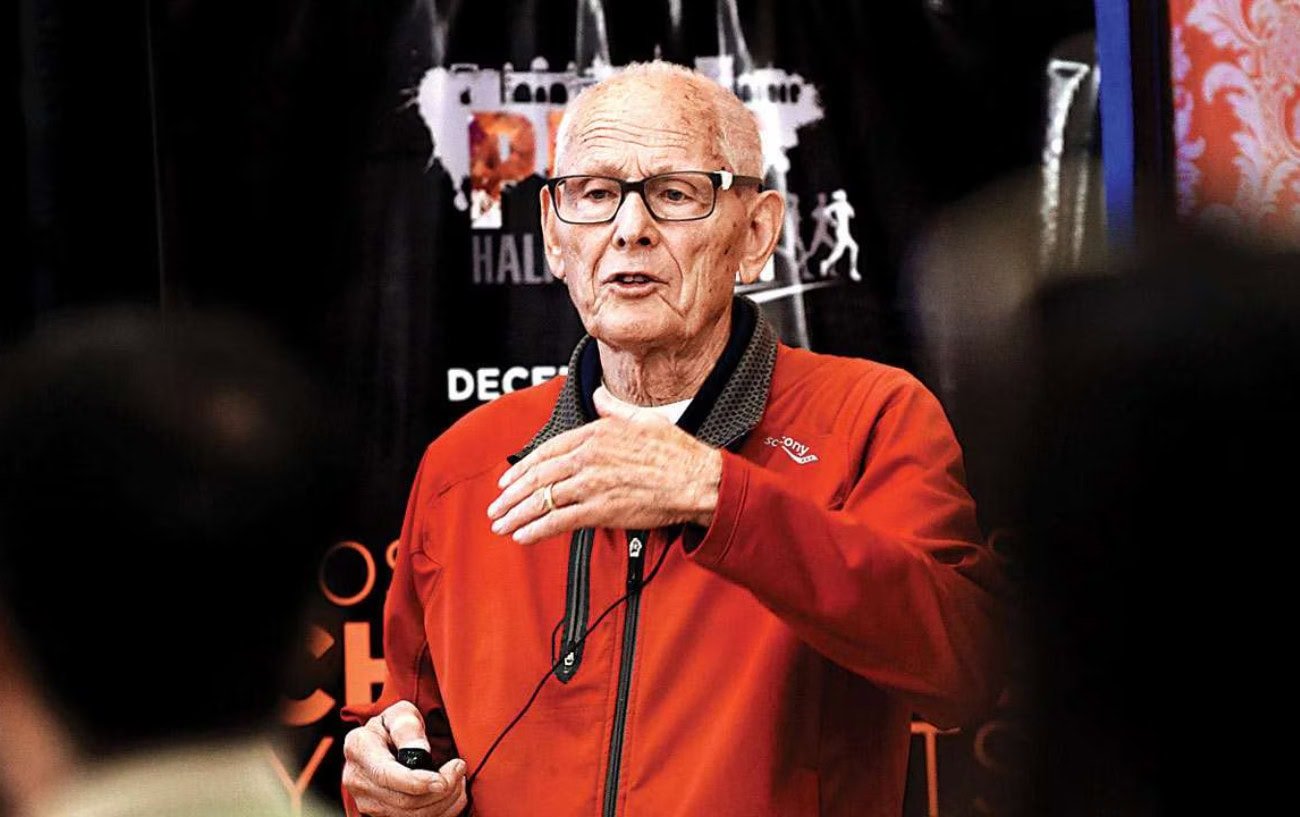When you’re just starting out as a runner, one of the biggest challenges can be catching your breath, feeling like you can’t get enough air.
But the truth is, even experienced runners with impressive PRs get winded when they push the pace. That’s because running demands a steady supply of oxygen to fuel your muscles and remove carbon dioxide, and breathing is how your body meets that demand.
For easy jogging, nasal breathing has its benefits—it filters, humidifies, and warms the air.
However, during higher-intensity efforts, it often can’t supply enough oxygen on its own. That’s where mouth breathing comes in. While it doesn’t filter the air as efficiently, it allows for greater airflow and helps you meet the demands of harder running.
So, what’s better: breathing through your nose or mouth while running? And how do each of these methods affect performance, comfort, and efficiency? Let’s get into the differences.

A Comparison Of Mouth Breathing Vs. Nose Breathing While Running
For easy jogging, nasal breathing is ideal, but many runners find that breathing through the nose is not sufficient for hard running, especially if they haven’t trained themselves to breathe only through the nose.
Consequently, the answer isn’t as simple as either-or; rather, to best meet your respiratory demands during vigorous running, you may need to breathe through both your nose and mouth.
Some runners may have heard that they should only breathe in and out through their nose during running, without breathing through their mouth.
The nasal passages have filters that warm, humidify, and purify the air you inhale, helping to trap allergens and pathogens before they are absorbed.
Mouth breathing gets a bad rap, but it’s an effective way to increase the amount of oxygen you’re able to take in.
Your mouth can open much wider than your nostrils, and your trachea is much wider than the nasal passages, so the volume of air (and thus oxygen) that can be inspired through the mouth far exceeds that of the nose.
Although breathing through the mouth allows for more air than the relatively restricted intake of air through nasal breathing, mouth breathing doesn’t permit the same type of filtering, humidifying, and temperature regulating that nasal breathing affords.
As a result, the air you inhale through the mouth doesn’t get the same special treatment, so it’s colder, drier, and may contain environmental allergens or irritants.
Consequently, when air inhaled through the mouth hits the bronchi, which are your main respiratory passages, it can cause exercise-induced bronchoconstriction, or EIB, and/or an asthmatic response.
Symptoms of EIB can include shortness of breath, coughing, chest tightness, sore throat, and decreased endurance.
These symptoms typically appear within a few minutes of starting to run and persist either intermittently or consistently until shortly after your workout is over.
Difficulty with mouth breathing is usually exacerbated when running in cold, dry air or when breathing really hard.
In the first scenario, the dry, cold air bypasses the necessary warming and humidification steps, presenting a greater shock to your system than when inhaling on a warm and humid day, where the air is already closer to what the bronchi prefer.
This is why it’s particularly common to experience a dry cough when running in the cold.
Secondly, breathing hard through the mouth floods the bronchi with a larger bolus of cold, dry air, so it can overwhelm the passageways and cause irritation.
Interestingly, it is mostly during intense workouts that most people resort to breathing through their mouths as a means to intake as much oxygen as possible.

The Science of Breathing: Why Exhaling Is Just as Important as Inhaling on the Run
Breathing is a process that most of us take for granted because we can do it unconsciously, but there’s actually quite a bit going on.1National Library of Medicine. (2016). Your lungs and exercise. Breathe, 12(1), 97–100. https://doi.org/10.1183/20734735.elf121
In terms of breathing while running, the most important takeaway is that we breathe to take in oxygen and expel carbon dioxide.
Both sides of the circuit are equally important, even though discussions of breathing while running usually focus just on the inhaling (breathing in) oxygen component.
The heart and working muscles indeed need oxygen while you run or perform any exercise, but they also have the critical need to offload carbon dioxide.
This occurs through exhalation or breathing out.
Carbon dioxide is a byproduct of energy production. If too much carbon dioxide builds up in the body, you will die.
At rest, we breathe only a small to moderate percentage of our lung capacity because our need for oxygen isn’t all that high.
The amount of air that we inhale and exhale at rest is known as tidal volume.
However, as soon as we start running, our muscles require a lot of oxygen to produce the energy needed for contraction.
Additionally, the energy-generation pathways produce carbon dioxide, which must be removed.
Carbon dioxide is cycled out of the muscles and into the blood, returned to the heart, and then pumped to the lungs, where it is expelled in the air we exhale.

Should Runners Breathe Through the Nose or Mouth?
Although mouth breathing is second nature to most runners these days, there’s anthropological evidence to suggest that humans used to rely predominantly on nasal breathing when running to hunt, travel from place to place, or escape danger.
Moreover, the impressive Tarahumara (Rarámuri tribe) runners in Copper Canyon, Mexico, practice not only the ancient tradition of running barefoot but also the apparent ancient tradition of nasal breathing.
Despite the fact that nose breathing while running had historically met our oxygen needs, humans eventually decided that the “more is better” attitude should also apply.
By prioritizing proper breathing, runners can enhance their oxygen advantage, resulting in improved endurance and overall running performance.
In other words, if oxygen is necessary for running, more oxygen will allow us to run even better.
Taken a step further, if we can get a small but sufficient amount of air in through the nose, but can get a lot more oxygen breathing through the mouth and nose together, we should do the latter because we will be able to run even better.
From this thinking, coaches and exercise physiologists began recommending oronasal breathing (using both the mouth and nose) to fully maximize the amount of oxygen that can be inhaled while running.
However, as mentioned, the heavy reliance on mouth breathing while running can create a new problem—exercise-induced bronchoconstriction.
The good news is that recent research has found that when runners take the time to adapt to nose breathing, they can perform just as well at high-intensity exercise efforts as when breathing through both the mouth and nose.
So, when is nasal breathing used?
Nasal breathing while running at submaximal, steady-state aerobic efforts actually improves running economy because it reduces the oxygen consumption cost of running at a given pace.
This can potentially allow you to increase your fitness, running further and longer without fatigue.
Therefore, although the natural hunch is that breathing through the mouth will give you a performance boost because you’re able to get more oxygen uptake, there actually may be performance benefits associated with nasal breathing, especially for endurance athletes.
That said, if you are now worried you are breathing wrong, don’t worry. Your preference should be the main determining factor.2RECINTO, C., EFTHEMEOU, T., BOFFELLI, P. T., & NAVALTA, J. W. (2017). Effects of Nasal or Oral Breathing on Anaerobic Power Output and Metabolic Responses. International Journal of Exercise Science, 10(4), 506–514. https://www.ncbi.nlm.nih.gov/pmc/articles/PMC5466403/

How To Start Nose Breathing
Unless you’re consciously practicing breathing exclusively through your nose while running, there’s a good chance you’re engaging in oronasal breathing, which involves breathing through both your mouth and nose simultaneously.
Even though you’re probably not thinking twice about how you breathe while you run and have concerns that it won’t be possible to change something that’s so unconscious, it is possible to change.
The key to changing how you breathe while running is adopting a patient attitude.
Most researchers and exercise physiologists note that adaptations in your breathing patterns and mechanics while running take time, typically six weeks to six months.
Factors that impact whether you fall closer to that six-week or six-month mark include things like:
- How long will it take to adapt, depending on your level of sensitivity to CO2?
- How diligently and consistently do you work on nasal breathing?
- How much do you run?
- How long have you been running?
- How fast or how hard do you run?
The most effective way to shift your breathing mechanics is to slow your pace down until it becomes comfortable to breathe through your nose.
Once you reach a steady-state pace where you can maintain the effort while breathing through your nose, hold that pace. Since this will be a slower pace than your usual training speed, you can do part of every run, like your warm-up and cool-down, at this effort.
Then, the next step is to start increasing your pace until you feel air hunger—the urge to take a deep breath.
Hover just above this threshold, much like you do with your lactate threshold on tempo runs, for as long as possible. This will desensitize your body to the sensations.
Over time, you can keep pushing this threshold higher and higher.

While it’s ideal to transition to nasal breathing consistently during your daily runs, your training schedule and goals may require a gradual approach. You can incorporate nose breathing into your routine while still relying on mouth breathing for intense workouts.
Other tips to help transition from mouth breathing to nose breathing while running include the following:
Tips To Help Transition From Mouthed Breathing To Nose Breathing:
- Lightly taping the mouth shut or holding small sips of water in your mouth, either of which will naturally cue your body to keep your lips sealed.
- Wearing nasal strips and internal nasal dilators.
- Use a neti pot or saline spray daily to rinse debris and mucus from your nasal passages.
- Exercise your respiratory muscles; the respiratory system will respond to regular breathing exercises, such as intentionally increasing your breathing rate through fast, shallow breaths (hyperventilation).
- Practicing alternate nasal breathing and mouth breathing when you are not running.
- Warm up before every run so that you can begin with nasal breathing and then ease into faster paces.
- Practicing deep breaths with belly breathing and diaphragmatic breathing.3Fitness, & Diseases, L. H. and. (2016, January 18). Breathing Basics for Runners. Www.lung.org. https://www.lung.org/blog/breathing-basics-for-runners
With patience and practice, you can train your body to obtain all the oxygen it needs by breathing only through your nose while running.
Understanding how to breathe properly while running is a great way to maximize performance.
By incorporating principles from exercise science and sports science, individuals can optimize their breathing techniques to enhance running performance.
However, don’t get bogged down if you’re unsure where to start. Consider working with a knowledgeable running coach who can provide valuable guidance in developing effective breathing strategies tailored to individual needs and goals.
Techniques such as rhythmic breathing can help runners maintain a steady pace and minimize breathlessness during sprints or long-distance runs.
For a deep dive on how to breathe while you run, check out:













This is such excellent material and I so appreciate you making it available to the public. I’m really ill informed about nutrition. Got to get into that more seriously.